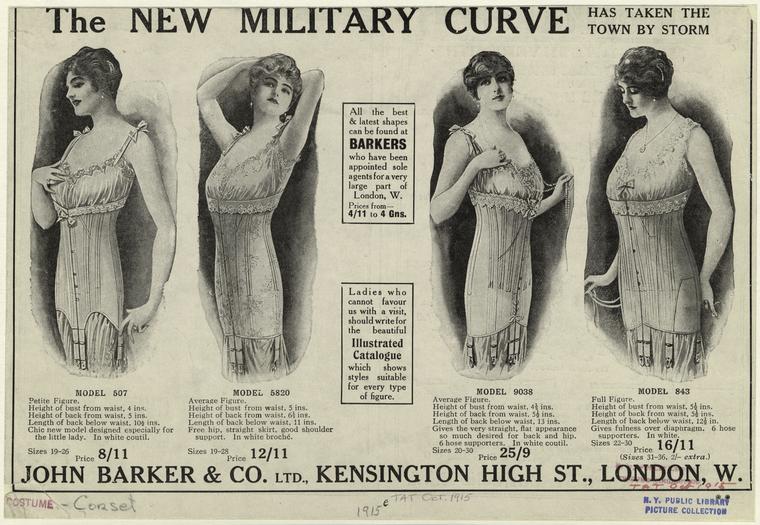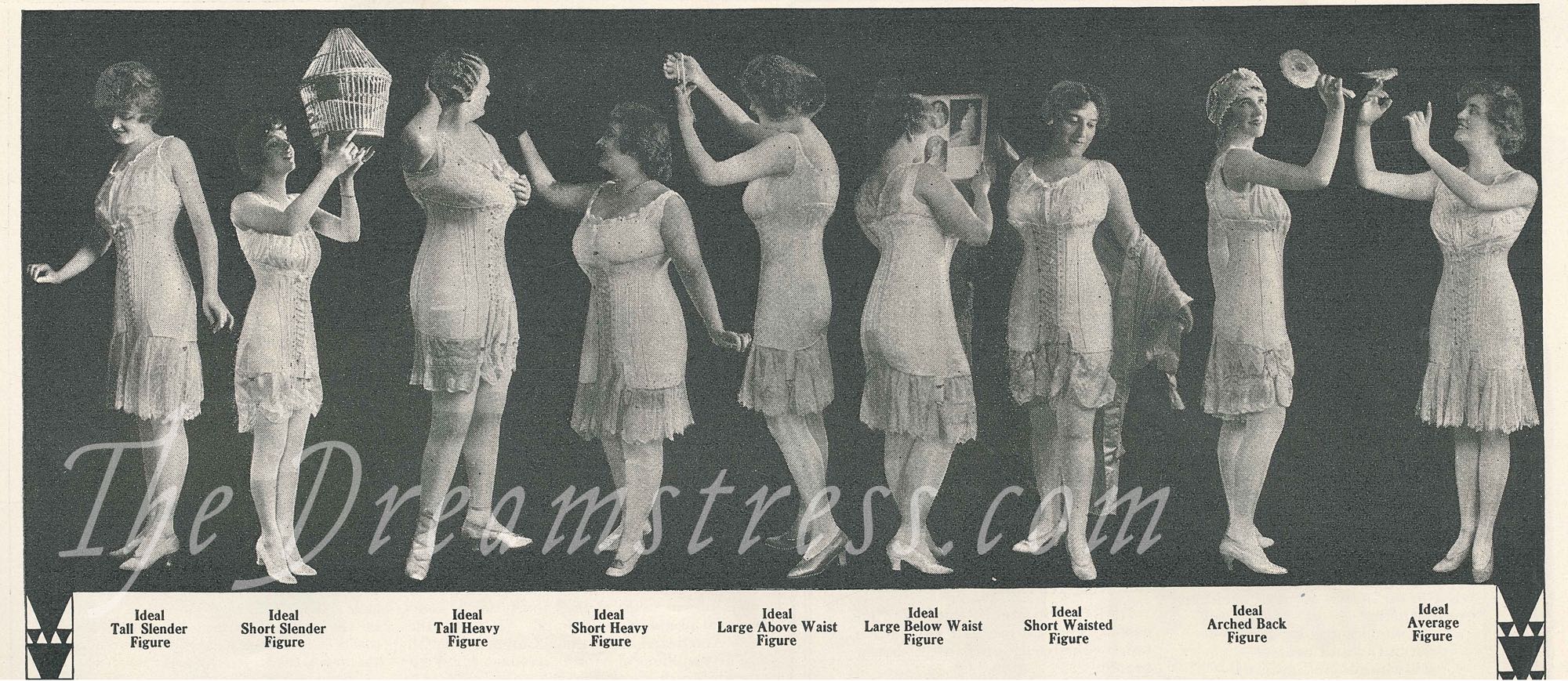The Ideal WWI era figure, Part III: the changing ideal from 1913-1921
Continuing on in my series looking at the ‘ideal’ figure from 1913-1921, this week lets look at how figure ideals changed from 1913 to 1921. See Part I, for a range of ideal figures as featured in a Gossard’s corset ad, here; and Part II, for a breakdown of the elements of the ‘ideal’ 1913-1921 figure, here. Starting in 1913, the ultra-fashionable 1913 figure was very much a carry-on of the extremely slim-hipped 1910 look: The bust is the full, low, drooping Edwardian mono-bosom that has been in fashion since ca. 1900. Depictions of un-corseted women in the same catalogue show figures that are somewhat less stylised, but have the same general slim hipped, low busted look, though with separate breasts, rather than a monobosom: The biggest change in the fashionable silhouette of the 1910s happened between 1913 and 1914. At the end of 1913 we see the very beginnings of the change: hips were widening, and the silhouette was changing from ‘a snake with a boob’ (as a friend of mine calls it), to …



